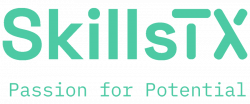Many in HR and Senior Management are worried about losing their top Digital, IT, Cybersecurity, and other technology-focussed specialist talent to other companies who present a more attractive opportunity.
The industry analyst data shows that during 2018 Talent Shortage became the top risk, with the pace of change facing the organizations emerging as the third most prominent risk.
This video provides some insights to help retain our most valuable specialist resources.
Transcript:
I spend most of my time working with Digital, IT, Cybersecurity, and other technology-focussed specialists, their managers and their HR representatives.
Many are worried about losing their top talent to other companies who present a more attractive opportunity.
The industry analyst data shows that during 2018 Talent Shortage became the top risk, with the pace of change facing the organizations emerging as the third most prominent risk.
Many of the top people are probably being approached by others on a regular basis – many times each week, according to some reports.
The biggest reason that people think about leaving is because they are concerned about the lack of opportunity, and see a stronger career path elsewhere.
Some are dissatisfied with management, others want more challenging work, and some are attracted by better pay and benefits.
Digital, IT, Cybersecurity, and other technology-focussed specialists are in high demand, and therefore toward the top of the tables in terms of turnover.
Each departure can cost one-third of their salary.
Churn is expected to continue to get worse. One 2019 report stated that one in four IT pros plan to seek new employment. So we need to work harder to hold on to the good ones!
How do we retain our most valuable specialist resources?
Unfortunately a generic HR approach and toolset will only get us so far.
Josh Bersin, well-known industry analyst, showed this at a recent presentation, and several of my customers have confirmed the same thing, that their generalist Human Capital Management systems do not provide sufficient granularity for these specialist resources.
Often the HR systems only allow a maximum of 8 competencies which means you can’t distinguish a Digital Forensics specialist from a service desk analyst granting people access to applications they need. In these situations, many are augmenting the company-wide general solution with some specialist capability – which can be integrated through APIs and other interfacing methods if required.
Typically HR want to improve their support for the IT department or other department who rely on these types of specialists, to ensure we attract, develop and retain these people in an environment where there is high demand and growing skills shortages.
So, what are the companies that are getting it right, doing?
- Confirming the skills they have and the skills they need – so you know where you’re starting from. Some organizations think they know what skills they have, and some will have taken a view on the skills they need. However, most don’t have a skills inventory, and the skills they really have are different to what they thought.
- Using a common language to define and describe skills, by selecting an internationally-adopted specialist skills framework for technology-dependent disciplines – so we’re all on the same page and able to understand each other.
- Taking an interest in their people, finding out what skills and experience they already have – not just the skills listed in their current job description, but a complete picture of their skill profile. Just asking helps improve employee engagement because they are being recognised for the specialist skills and experience, plus this information is also critical as otherwise you have no idea where you’re starting from because you can’t be sure what skills you already have.
- Being transparent and clear about the skills needed, so people can see their potential gaps and work with their managers to build and maintain a focussed development action plan. This gives them a view of the opportunity, plus the clarity of knowing what they need to advance.
- Empowering the Managers to have a better conversation and collaboration with their direct reports and teams. Giving them the data they need on the skills and action plans.
- Looking at the data across the whole organization. Supporting better data-driven decision making. Knowing what the top people and skills related risks are.
If this is resonating with you, let’s have a chat about how we can help.





